In today’s fast-paced and highly competitive digital landscape, having an effective outreach strategy is crucial for organizations and individuals alike. Whether you’re a business looking to expand your customer base, a nonprofit aiming to raise awareness for a cause, or an individual seeking to build meaningful connections, mastering the art of outreach can be a game-changer.
In this blog, we’ll dive deep into the world of outreach strategy, exploring proven tools like DMPro, techniques and insights to help you engage your target audience, establish strong relationships, and achieve your goals. Get ready to unlock the untapped potential of outreach and propel your endeavors to new heights.
Table of Contents
ToggleA Guide to Launching Your Outreach Strategy
As a new business owner, launching an effective outreach strategy is crucial to building your brand, attracting customers, and driving growth. In the next section, we will give you 6 different strategies for making your business bigger and better. Let’s dive in!
Step 1: Research and Analysis
Before diving headfirst into your customer outreach efforts, it’s crucial to lay a solid foundation through thorough research and analysis. This initial step will not only provide valuable insights into your target audience but also help you identify opportunities, challenges, and trends that can inform your outreach strategy. Let’s explore the key components of this critical phase:
Identifying Objectives and Goals
Clearly defining your outreach objectives is essential to ensure focused and measurable results. According to a study by the Content Marketing Institute, 63% of organizations with a documented content marketing strategy reported having clearer objectives, leading to greater overall success.
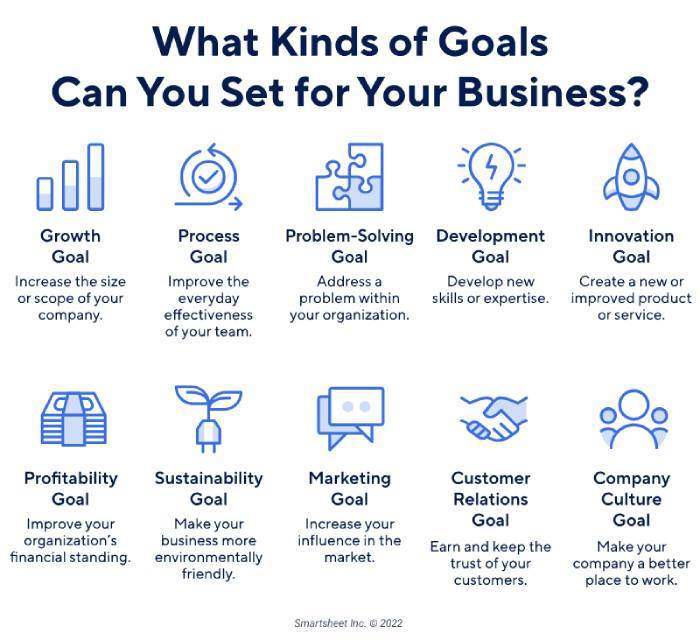
Conducting Market Research
To effectively reach your audience, you must first understand their preferences, pain points, and behavior. Market research involves gathering and analyzing data related to your target market. This can include demographic information, consumer behavior patterns, psychographic insights, and industry trends.
For instance, if you’re a tech startup targeting young professionals, your market research may reveal that your audience spends a significant amount of time on social media platforms and prefers engaging with interactive content.
Through comprehensive market research, you can uncover valuable data and insights. For example, a survey conducted by Pew Research Center found that 81% of adults in the United States own a smartphone, emphasizing the importance of mobile-friendly outreach strategies.
Analyzing Competitors’ Outreach Efforts
Examining your competitors’ outreach strategies can provide valuable benchmarking opportunities. By understanding their tactics and analyzing their strengths and weaknesses, you can gain a competitive edge. Research by HubSpot reveals that 63% of marketers actively track their competitors’ activities to refine their own strategies.
Defining Key Performance Indicators (KPIs)
Measuring the success of your outreach strategy is crucial. By establishing relevant KPIs, you can track progress and make data-driven adjustments. Common KPIs in outreach strategies include website traffic, social media engagement, lead generation, conversion rates, and customer retention.
For example, if your outreach strategy aims to increase website traffic, you can set a KPI of achieving a 30% increase in organic search traffic within three months. This allows you to track the effectiveness of your efforts and make adjustments as needed.
According to a study by Aberdeen Group, organizations that align their KPIs with their business goals are 58% more likely to achieve success.
Remember, research and analysis provide the groundwork for an effective outreach strategy. By leveraging data and insights, you can make informed decisions and maximize your chances of success.
Step 2: Building a Compelling Value Proposition
To captivate your target audience and differentiate yourself from competitors, building a compelling value proposition is crucial. Your value proposition is the unique promise of value that you offer to your audience. In this section, we’ll explore key aspects of crafting an irresistible value proposition that resonates with your target audience.
But before we start, let’s take a look at DMPro’s Instagram DM templates. If you can’t find the right text or proposition, well then just write one! You can have up to five different direct message templates on DMpro and you can design them just the way you want. And then our dedicated account managers will manually send your designed templates to your target audience and invite them to follow you. Sign up to DMPro and design your templates today!
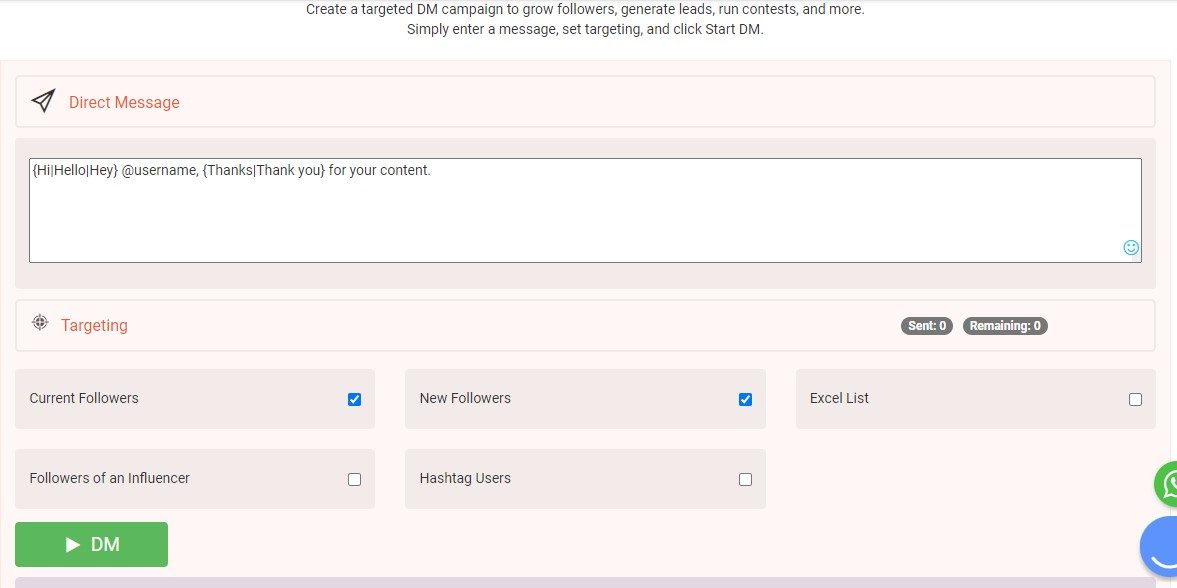
Understanding the Target Audience’s Needs and Pain Points
In order to create a value proposition that truly resonates, you must have a deep understanding of your target audience’s needs, desires, and pain points. By conducting surveys, interviews, and analyzing customer feedback, you can gather valuable insights into what motivates and challenges them.
For instance, if you’re a fitness brand targeting busy professionals, your research may reveal that time constraints and convenience are key pain points. Your value proposition can then emphasize time-efficient workouts and personalized fitness plans that can be easily incorporated into their busy schedules.
Crafting a Unique Selling Proposition (USP)
Your Unique Selling Proposition (USP) is what sets you apart from your competitors and gives your audience a compelling reason to choose you. It should highlight the specific benefits or solutions you offer that are unmatched in the market.
For example, if you’re a software company developing project management tools, your USP could be providing a user-friendly interface with seamless integration across multiple platforms. This sets you apart from competitors and appeals to users seeking a streamlined project management experience.
Aligning the Value Proposition with the Organization’s Mission
Your value proposition should align with your organization’s mission and values. This consistency helps build trust and credibility with your audience. Clearly articulate how your products, services, or initiatives support and fulfill your organization’s overarching purpose.
For instance, if you’re a sustainable fashion brand, your value proposition can emphasize the use of eco-friendly materials, fair labor practices, and the reduction of environmental impact. This alignment with your mission resonates with environmentally conscious consumers seeking ethical fashion choices.
By understanding your target audience’s needs, crafting a unique selling proposition, and aligning it with your organization’s mission, you can build a compelling value proposition that resonates with your audience and sets you apart from competitors.
Step 3: Selecting Effective Outreach Channels
Once you have a solid understanding of your target audience and a compelling value proposition, it’s time to determine the most effective outreach channels to engage and connect with your audience. In this section, we’ll explore various digital and offline channels that can amplify your outreach efforts and drive meaningful interactions.
In today’s digital age, leveraging online platforms is essential for effective outreach. Here are some key digital channels to consider:
a. Social Media Platforms
With billions of users worldwide, social media platforms offer a vast landscape for outreach. Identify the platforms where your target audience is most active, such as Facebook, Instagram, LinkedIn, or Twitter. Create engaging content, foster conversations, and leverage targeted advertising to reach your audience effectively.
Tools like DMPro provide a specialized approach to Instagram business growth. With DMPro, businesses can optimize their outreach efforts by harnessing the power of personalized direct messages. By signing up and inputting their target audience and competitors, businesses can benefit from a dedicated account manager who manually sends tailored DMs to engage potential customers.
DMPro’s features, including customizable DM templates, offer businesses an opportunity to stand out and make a meaningful impact on their Instagram audience. So if you’re looking for a way to reach out to your potential customer and convert them into actual loyal clients, sign up to DMPro today and start growing now!

b. Email Marketing
Email marketing remains a powerful tool for nurturing relationships and driving conversions. Build an opt-in email list and send personalized, value-driven content to your subscribers. Use segmentation to tailor messages to specific audience segments, increasing relevance and engagement.
c. Content Marketing and Blogging
Sharing valuable content through blog posts, articles, videos, or podcasts positions you as an authority in your industry and attracts your target audience. Optimize your content with relevant keywords, provide practical tips, and offer insights that address your audience’s pain points.
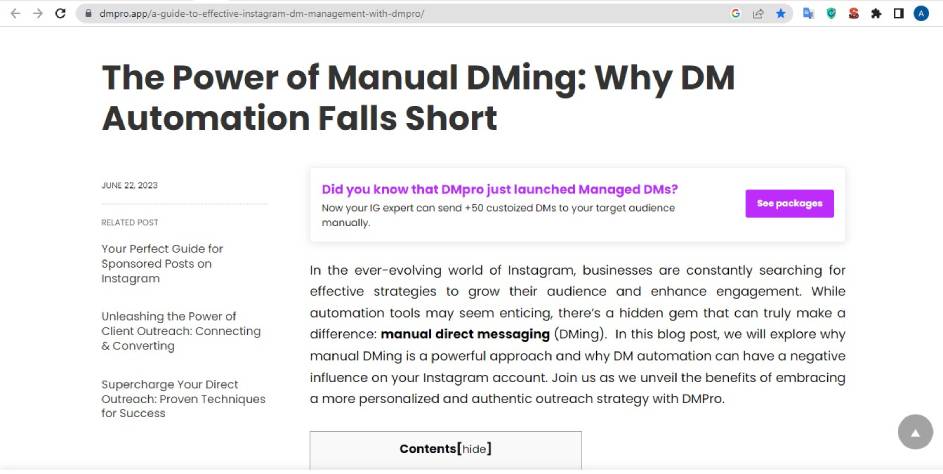
Offline Engagement Opportunities
While digital channels dominate today’s landscape, offline engagement opportunities still hold value. Consider the following avenues:
a. Events and Conferences:
Participate in industry events, trade shows, or conferences where your target audience is likely to be present. Engage in speaking engagements, set up booths, or sponsor relevant events to connect with potential customers, partners, and industry influencers.
b. Community Partnerships:
Collaborate with local organizations, charities, or community groups to create meaningful partnerships. Sponsor or participate in community events, volunteer initiatives, or educational programs to build brand awareness and establish a positive reputation.
c. Traditional Media and PR:
Don’t underestimate the power of traditional media channels such as newspapers, magazines, radio, and television. Develop relationships with journalists, pitch newsworthy stories, or contribute expert opinions to gain exposure and reach a wider audience.
Remember, the key to selecting effective outreach channels is to understand where your target audience spends their time and tailor your efforts accordingly. A well-rounded approach that combines digital platforms with offline opportunities can amplify your reach and foster meaningful connections.
Step 4: Personalized and Relationship-Driven Approach
To truly connect with your audience and establish long-lasting relationships, a personalized and relationship-driven approach is key. By tailoring your outreach efforts and fostering meaningful connections, you can create a memorable and impactful experience for your target audience. Let’s explore how you can implement this approach in your outreach marketing and community outreach strategy.
Utilizing Customer Relationship Management (CRM) Tools
Investing in a robust CRM system allows you to collect and manage valuable customer data. By organizing information such as demographics, preferences, purchase history, and interactions, you can personalize your outreach efforts. Utilize CRM tools to segment your audience and deliver tailored messages, offers, and recommendations based on their specific needs and interests.
One such tool that can significantly impact your outreach communication, particularly on Instagram, is DMPro. Designed specifically for Instagram business growth, DMPro offers a unique approach to engaging with your target audience and converting them into customers.
How does DMPro work?
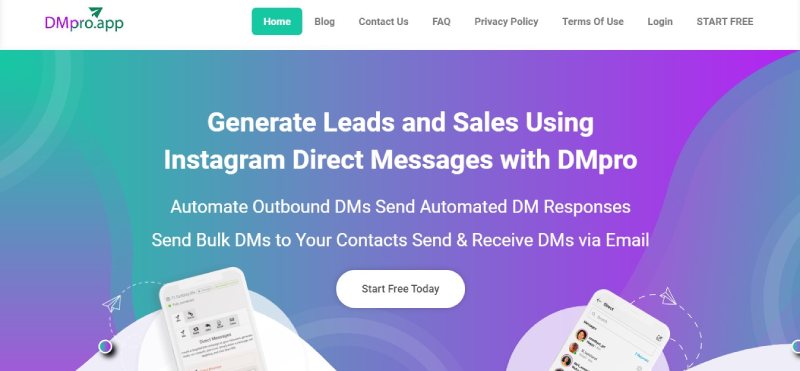
It’s simple yet powerful. After signing up, users enter their target audience parameters and competitors. From there, a dedicated account manager takes the reins, manually sending direct messages (DMs) to the identified target audience. This personalized and one-on-one approach ensures authentic engagement and opens the door to meaningful conversations.
With DMPro, you can enjoy several benefits for your outreach strategy:
a. Genuine and Personalized Interactions
The manual DM approach employed by DMPro ensures that every interaction with your target audience is authentic, personalized, and tailored to their specific needs. This human touch helps foster trust and increases the chances of conversion.
b. Strategic Targeting and Competitor Analysis:
By providing your target audience parameters and competitor information, DMPro’s account managers can strategically identify and engage with users who align with your ideal customer profile. This targeted approach maximizes the effectiveness of your outreach efforts.
c. Customizable DM Templates:
DMPro allows users to create up to 5 custom DM templates. These templates can be tailored to match different segments of your target audience or address specific pain points, enabling you to craft compelling messages that resonate with your potential customers.
By integrating DMPro into your outreach strategy, you can enhance your communication efforts on Instagram and establish meaningful connections with your target audience. The personalized approach, combined with strategic targeting and customizable DM templates, empowers you to effectively nurture relationships and drive conversions.
Implementing Personalization Strategies
Personalization goes beyond addressing someone by their first name. It involves crafting customized content and experiences that resonate with individuals on a deeper level. Leverage the data you’ve collected to create personalized email campaigns, product recommendations, or targeted advertisements. Personalization has been shown to increase customer engagement and conversions significantly (source: Epsilon, 2021).
Nurturing Relationships with Influencers and Industry Experts
Collaborating with influencers and industry experts can significantly amplify your outreach efforts. Seek out individuals who have an engaged following and align with your brand values. Engage in authentic partnerships, such as sponsored content or guest blogging, to tap into their reach and credibility. Their endorsement can boost brand visibility and trust among their followers.
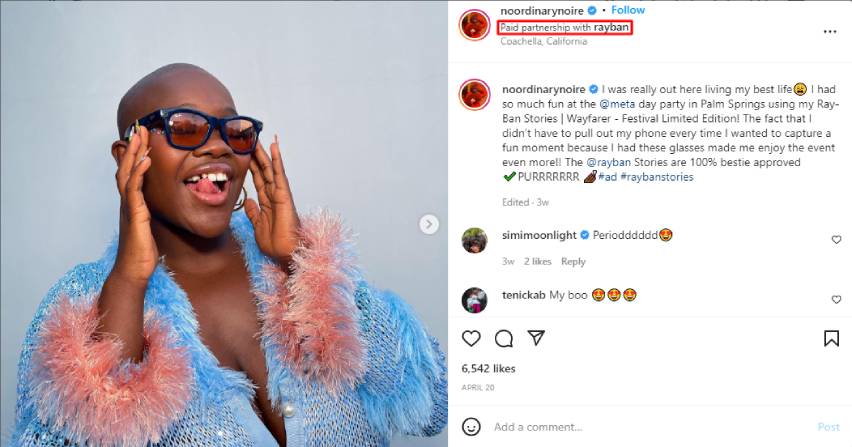
Additionally, consider building relationships within your industry by actively participating in relevant communities, forums, or social media groups. Engage in conversations, provide valuable insights, and establish yourself as a trusted resource. These relationships can lead to collaborations, partnerships, and word-of-mouth referrals.
By adopting a personalized and relationship-driven approach, you can create a genuine connection with your audience, foster brand loyalty, and drive long-term success with your outreach marketing and community outreach strategy.
Step 5: Measuring and Analyzing Results
Measuring and analyzing the results of your outreach campaign strategy is essential for optimizing your efforts and maximizing your outcomes. By implementing effective tracking mechanisms and analyzing key metrics, you can gain valuable insights into the success of your outreach initiatives. Let’s explore the steps involved in measuring and analyzing the results of your outreach campaign strategy.
Setting Up Tracking Mechanisms
To measure the effectiveness of your outreach campaign strategy, it’s crucial to establish tracking mechanisms. Implement tools such as Google Analytics, social media analytics, or CRM systems to monitor various metrics, including website traffic, engagement rates, click-through rates, conversion rates, and customer acquisition.

Monitoring Key Performance Indicators (KPIs) and Metrics
Identify the key performance indicators (KPIs) that align with your outreach campaign goals. These could include metrics like the number of leads generated, email open rates, social media engagement, or revenue generated from specific campaigns. Regularly monitor these KPIs to track your progress and identify areas for improvement.
Analyzing and Iterating the Outreach Strategy
Regular analysis of your outreach campaign results is vital to uncover insights and make data-driven decisions. Identify patterns, trends, and areas of success or underperformance. Adjust your strategy accordingly by iterating on messaging, targeting, or outreach channels to optimize your outreach efforts.
By consistently measuring and analyzing the results of your outreach campaign strategy, you can gain a comprehensive understanding of what is working and what needs improvement. This data-driven approach allows you to refine your tactics, allocate resources effectively, and achieve better outcomes over time.
Step 6: Continuous Learning and Adaptation
In the ever-evolving landscape of outreach, the ability to learn, adapt, and stay ahead of the curve is crucial. Step 6 of your outreach strategy involves embracing a mindset of continuous learning and making necessary adaptations to ensure long-term success. Let’s explore the key aspects of this step:
Embracing a Growth Mindset
A growth mindset is essential for continuous improvement. It involves being open to new ideas, seeking feedback, and embracing challenges as opportunities for growth. By cultivating a growth mindset within your outreach team, you can foster a culture of innovation, creativity, and adaptability.
Staying Updated with Industry Trends
To remain competitive, it’s important to stay abreast of the latest industry trends and emerging technologies. Regularly monitor industry publications, attend conferences, participate in webinars, and engage in relevant online communities. By staying informed, you can identify new opportunities, spot potential threats, and adapt your outreach strategy accordingly.
Seeking Feedback and Iterating the Strategy
Feedback is a valuable tool for improvement. Actively seek feedback from your target audience, customers, and internal team members. Conduct surveys, hold focus groups, and encourage open dialogue to gain insights into what is working and areas that can be enhanced. Use this feedback to iterate and refine your outreach strategy over time.
Blog Outreach Strategy
A successful blog outreach strategy involves reaching out to relevant blogs and websites to expand your online presence, build backlinks, and drive traffic to your own blog. It requires thorough research to identify suitable target blogs, crafting personalized pitches, and establishing mutually beneficial partnerships.
By collaborating with influential bloggers and leveraging their audiences, you can amplify your reach, enhance credibility, and attract new readers to your blog.
Outreach Strategy Template
An outreach strategy template serves as a framework for planning and executing outreach efforts. It outlines the key components of your strategy, including goals, target audience, messaging, outreach channels, and metrics for measuring success.
A well-designed template helps streamline the outreach process, ensures consistency in messaging, and allows for easy tracking and analysis of results. Customize the template to fit your specific goals and target audience, making it a valuable tool for effective outreach campaigns.
Overcoming Common Outreach Challenges
While implementing an outreach strategy, it’s important to be prepared for potential challenges that may arise along the way. By understanding and addressing these challenges, you can navigate them effectively and ensure the success of your outreach efforts. Let’s explore some common challenges and strategies to overcome them:
Overcoming Resistance or Skepticism
Some individuals or organizations may be hesitant or skeptical about engaging with outreach initiatives. To overcome this challenge, focus on building trust and credibility. Provide valuable content, demonstrate expertise, and showcase success stories or testimonials. Incorporate social proof into your outreach efforts to alleviate skepticism and foster confidence in your brand.
Managing Limited Resources
Limited resources, such as budget or manpower, can pose a challenge when executing outreach strategies. To overcome this, prioritize your efforts by focusing on channels and tactics that yield the highest return on investment. Leverage cost-effective digital platforms, explore collaborations or partnerships, and leverage automation tools to optimize your outreach efforts within your available resources.
Addressing Cultural and Language Barriers
When targeting diverse audiences, cultural and language barriers may arise. It’s essential to tailor your outreach messaging to be culturally sensitive and inclusive. Consider localizing content, hiring translators, or partnering with individuals who understand the target culture. Additionally, conduct thorough research to ensure your messaging resonates with the nuances of different cultural contexts.
Adapting to Changing Consumer Behaviors
Consumer behaviors and preferences are continuously evolving. Staying adaptable and flexible is crucial to overcoming this challenge. Regularly monitor and analyze consumer trends, engage in social listening, and collect feedback to identify shifting preferences. Be ready to adjust your outreach strategy accordingly, embracing new platforms, formats, or messaging approaches that align with changing consumer behaviors.
By proactively addressing these common challenges, you can enhance the effectiveness of your outreach strategy and achieve better results. Remember, challenges provide opportunities for growth and innovation. Embrace them as learning experiences that help you refine and strengthen your outreach efforts.
Case Studies: Successful Outreach Strategies
Examining successful outreach strategies through real-life case studies provides valuable insights and inspiration for your own efforts. Let’s explore two examples of organizations that have achieved remarkable results through their outreach strategies:
Case Study 1: XYZ Organization – Harnessing Social Media for Engagement
XYZ Organization, a nonprofit dedicated to environmental conservation, implemented a robust outreach strategy centered around social media. By leveraging platforms like Facebook, Instagram, and Twitter, they engaged with their target audience of environmentally conscious individuals and raised awareness for their cause.
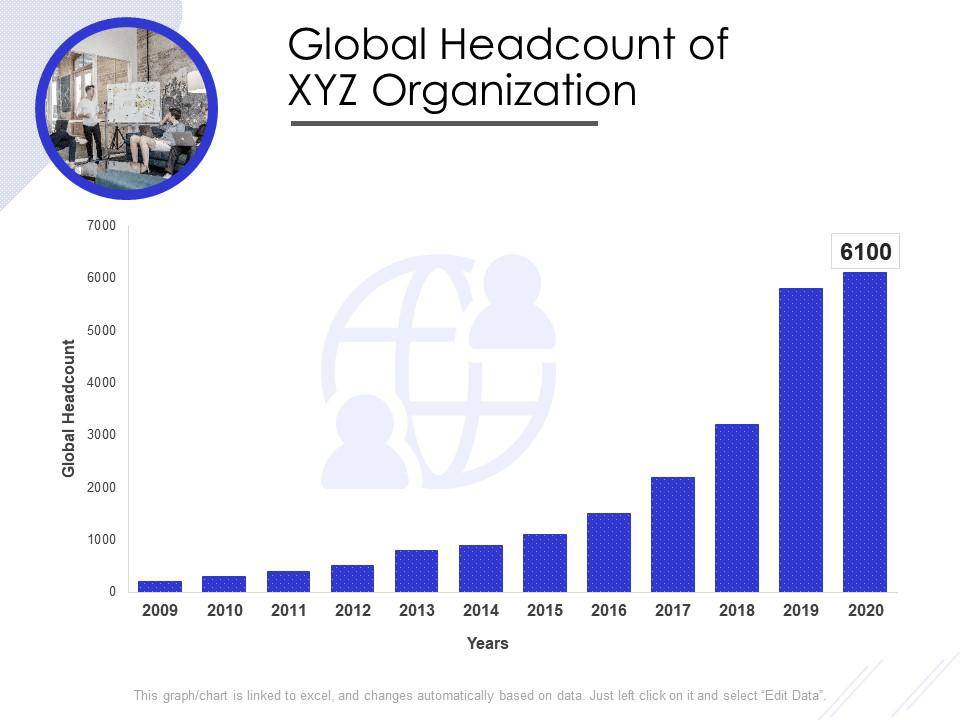
Their strategy included sharing engaging content, hosting interactive contests, and partnering with influential environmental bloggers and influencers. As a result, XYZ Organization witnessed a significant increase in social media followers, a boost in volunteer participation, and an increase in donations.
Case Study 2: ABC Nonprofit – Cultivating Meaningful Partnerships
ABC Nonprofit, focused on empowering underprivileged communities, developed a community-centric outreach strategy. They formed strategic partnerships with local businesses, educational institutions, and community organizations. Through collaborative initiatives like workshops, mentoring programs, and resource sharing, ABC Nonprofit effectively reached and served their target population.
This approach not only expanded their reach but also enhanced their impact on the community. As a result, they garnered widespread support, attracted new volunteers and donors, and strengthened their position as a leading nonprofit in their field.
FAQs on Outreach Strategy
Now let’s answer some questions on the topic “outreach strategy”.
What is Outreach Strategy?
Outreach strategy refers to a well-defined plan that outlines how an organization or individual intends to reach and engage their target audience, create meaningful connections, and achieve desired outcomes.
How to Create an outreach Strategy?
To create an outreach strategy, you need to conduct research, identify your target audience, set clear objectives, select appropriate outreach channels, develop compelling messaging, establish metrics for measuring success, and continuously iterate and adapt your strategy based on feedback and results.
How to Develop Educational Outreach Strategy
Developing an educational outreach strategy involves identifying the educational goals, defining the target audience, selecting appropriate educational methods and resources, establishing partnerships with educational institutions or organizations, and continuously evaluating and refining the strategy to maximize its impact.
How Do You Develop an Outreach Strategy?
To develop an outreach strategy, start by clearly defining your goals, understanding your target audience, researching effective outreach channels, crafting compelling messages, implementing tracking mechanisms, analyzing results, and continuously learning and adapting to improve your strategy over time.
What is an Outreach Plan?
An outreach plan is a detailed document that outlines the specific tactics, activities, and timeline for implementing an outreach strategy. It provides a roadmap for executing outreach initiatives, allocating resources, and measuring progress towards achieving desired outcomes
What are Examples of Outreach?
Examples of outreach include hosting community events, participating in conferences or trade shows, collaborating with influencers or industry experts, conducting workshops or webinars, engaging on social media platforms, distributing informative content, and forming partnerships with other organizations to reach and engage a target audience.
Why Is an Outreach Strategy Important?
An outreach strategy is important because it helps organizations or individuals effectively reach and engage their target audience, build relationships, raise awareness, drive desired actions or behaviors, and ultimately achieve their goals. It enables focused and intentional communication efforts to maximize impact and create meaningful connections with the intended audience.
Conclusion
In a world where effective communication and connection are paramount, an outreach strategy serves as a guiding light to navigate the complexities of engaging with your target audience.
By leveraging the insights and strategies shared in this blog, you can embark on a journey of successful outreach, leaving a lasting impact on your audience and driving positive outcomes.
So, take the leap, implement your outreach strategy, and watch as your efforts resonate, connections flourish, and success unfolds. Together, let’s unleash the power of outreach and forge a brighter future through meaningful engagement and lasting relationships. Also, don’t forget to sign up to DMPro and improve your Instagram DM outreach!

